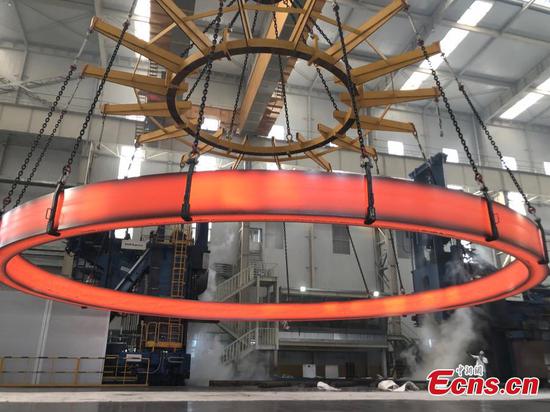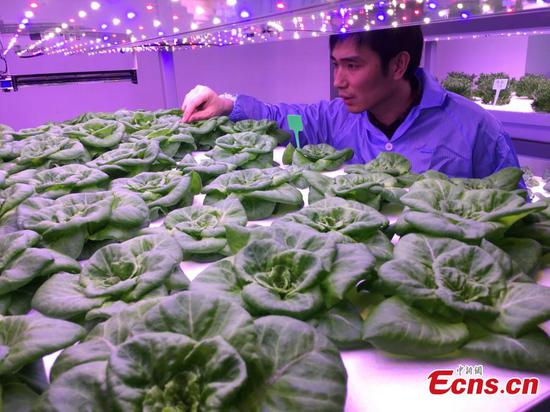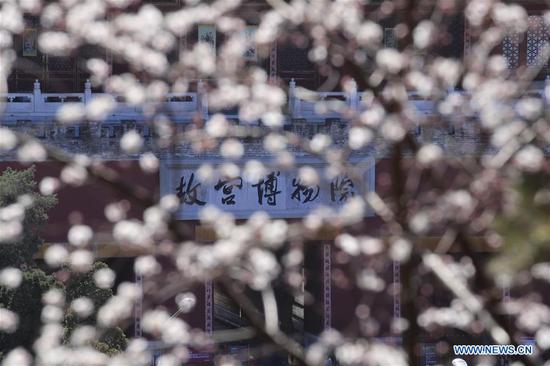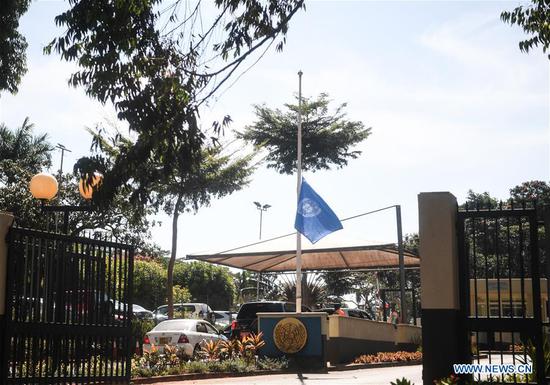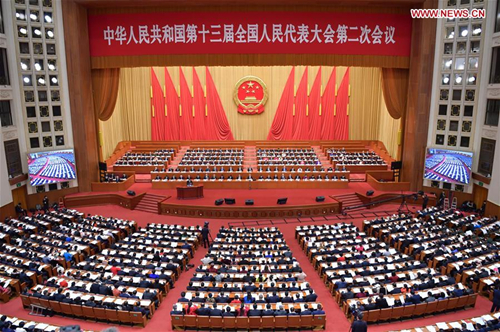
In 2018, China's GDP grew 6.6 percent and the size of its economy exceeded 90 trillion yuan ($13.41 trillion). But despite that, the Chinese economy faces downturn pressure because of external and internal factors, especially the drastic changes and rising uncertainties in the world.
That's why this year's Government Work Report's focus is on maintaining economic operations within reasonable range and stabilizing economic growth. And for stabilizing growth, the government has to improve the proactive fiscal policy in order to enhance the counter-cyclical adjustment function of macro policy.
The Government Work Report says larger-scale tax cuts will be implemented this year to primarily reduce the tax burdens on the manufacturing sector and micro and small enterprises. The government has already reduced taxes and fees on a large scale, including lowering the value-added tax (VAT) rate and offering favorable tax rates to micro and small enterprises and innovation-oriented companies. In fact, the tax and fee cuts last year added up to almost 1.3 trillion yuan.
This year, the government will introduce general-benefit as well as structural tax cuts, and advance the VAT reform by lowering the taxation rate for major industries. For instance, it will cut the taxation rate in manufacturing and other industries from 16 to 13 percent, and that in the transportation, construction and other industries from 10 to 9 percent to substantially reduce the tax burdens on the main industries, which will help boost the real economy.
The government will keep the lowest bracket tax rate of 6 percent unchanged, while adopting supporting measures such as increased tax deductions for producer and consumer services to lessen the tax burden on all industries and move toward cutting the number of VAT brackets from three to two and simplifying the VAT system.
The government will also reduce enterprises' contributions to the social insurance schemes of their employees, without compromising employees' social security benefits. It will lower the share borne by employers for urban workers' basic aged-care insurance premium, and could allow localities to reduce contributions to 16 percent.
These tax cuts and fee reductions could reduce the enterprises' economic burden by about 2 trillion yuan this year, which will increase their sense of gain, boost their confidence about further development and inject new vitality into the market.
The authorities will reduce the fees paid by enterprises, too. For example, the government will deepen reform in the power sector to overhaul surcharges on electricity prices, lower electricity costs, and cut the average electricity price for general industrial and commercial businesses by another 10 percent. And the authorities will further reform the toll roads system to reduce tolls on roads and bridges, while also abolishing or lowering a number of railway and port charges.
These measures will not only benefit the enterprises but also the public, because it will accelerate population mobility and commodity circulation, and reduce the operation and transaction costs of enterprises, which in turn will boost economic development.
Since the tax and fee cuts will create tremendous pressure on government budgets at all levels, departments at all levels have been asked to tighten their belts and find workable means of raising funds. And to increase revenue and reduce expenditure, the central government will increase the contributions from State-owned enterprises and financial institutions directly under its control, and reduce its general expenses by more than 5 percent, and expenses on official overseas visits, and official vehicles and hospitality by at least 3 percent.
The new round of tax cuts and fee reductions has exceeded market expectations. Along with the individual income tax reform implemented at the beginning of the year, the tax and fee reductions will help the government play a better and proactive role when it comes to providing better services, improving the market mechanism and further optimizing the business environment, which are all essential for promoting high-quality economic development.
The author is a research fellow at the National Academy of Economic Strategy, Chinese Academy of Social Sciences. The views don't necessarily represent those of China Daily.

















